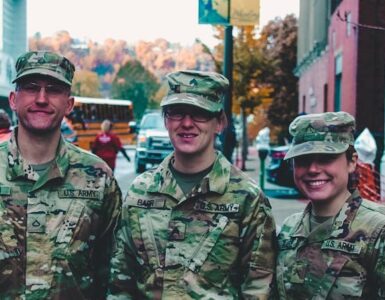Over 200 miles away from Phoenix, parents from the Navajo Nation have few good educational options for their children. District schools in the area earn poor results, quality charter schools are too far away, and tuition at a nearby private school is out of reach.
According to state Department of Education data, the closest nearby district schools earn grades of ‘D’ and ‘F’ letter grades, while there are no charter school options in the surrounding area. The one ‘C’ rated district campus nearby is a small immersion school only serving grades K-6 and is not an option for parents seeking a quality middle school.
The Arizona Department of Education’s Empowerment Scholarship Account (ESA) program partially alleviated this problem. The program uses a portion of state education dollars to create scholarships for parents to meet their children’ educational needs in a private or homeschool setting, an option that proved invaluable for some students of the Navajo Nation.
The state Department of Education in May, however, directed the Navajo families using ESAs to repay the dollars spent on the scholarships because they were used to pay tuition at a school outside the state. The seven Navajo families using the scholarships had been attending Hilltop Christian Middle School, a private school in New Mexico less than a mile from the state border.
The Legislature in May adopted legislation to allow ESA students to continue attending schools within two miles of the state border until July 1, 2020. Governor Ducey signed the bill into law.
“The impacted children will be allowed to attend a school that has served them well for years for just one more school year — all the time knowing that they will not be able to continue,” Ducey said in statement. “I look forward to working with the Legislature to pass a permanent fix that will provide certainty and stability to these children, and for all of the Arizona children living in the Navajo Nation.”
Critics of the scholarship program accused the state Legislature and governor of using this unique case involving a handful of children who live on a reservation as a vehicle for expanding the ESA program, something voters opposed when they passed Proposition 305 last November. That proposition reversed Senate Bill 1431 which passed in 2017 that sought to make more children eligible for ESAs.
Passage of the proposition limits the program only to students who meet certain specific criteria.
“Unfortunately, the claim — and you see it in the press a lot repeated as fact — was that this was some kind of stealth expansion play,” explains Arizona Chamber Foundation senior research strategist Dr. Matthew Ladner. “The reality is there wasn’t any language filled with any piece of the legislation that would have made a single additional child eligible to the ESA program. Nor is there some large number of private schools just over the border of New Mexico.”
Ladner says the bills were commendable temporary solutions for the students on the Navajo Nation, but they were just that: temporary. To ensure the success of future students in similar situations, the Legislature must work to find a long-term solution for students who don’t have access to competitive primary and secondary schools, he says.
“I’m glad they worked something out for the kids for this year,” Ladner said. “I also think that if calmer heads were to prevail, and we were to actually think about the interest of students in Native American reservations in Arizona, I think allowing them to go a little over state lines is not bad policy.”
If the state hopes to provide equally strong education options for all students, including those who live on reservations, the Legislature should consider a permanent expansion, Ladner says.
“These areas are very different than areas such as Phoenix or Tucson — in Phoenix and Tucson and even Yuma, families have access to charter schools and there are multiple districts, and we can do an open enrollment transfer between all these kinds of things,” Ladner said. “Options out on the reservation can be very few and far between. I’m hopeful that if we can actually focus on the interests of kids living on our Native American reservations, something long-term can be worked out.”
















Add comment